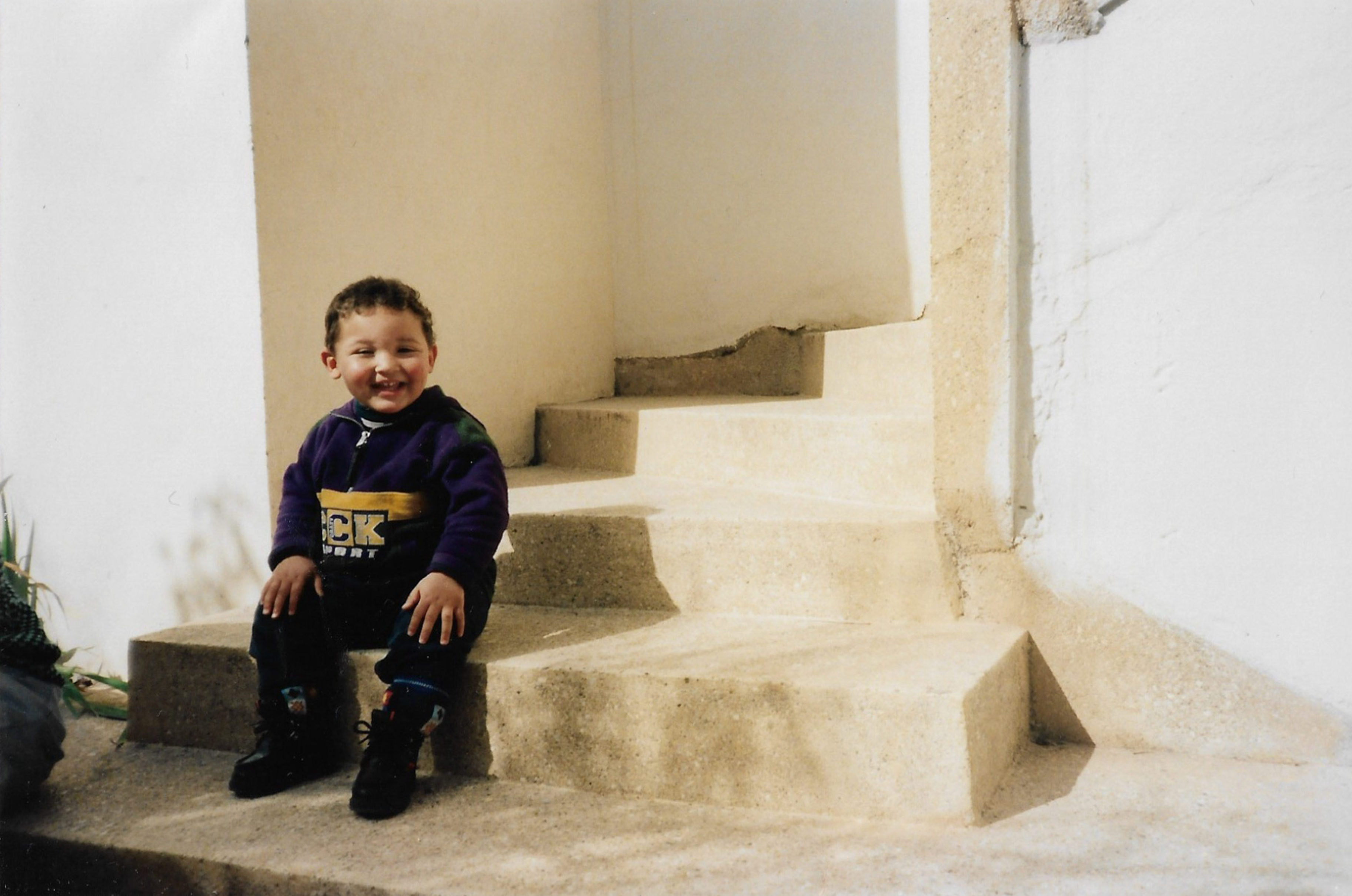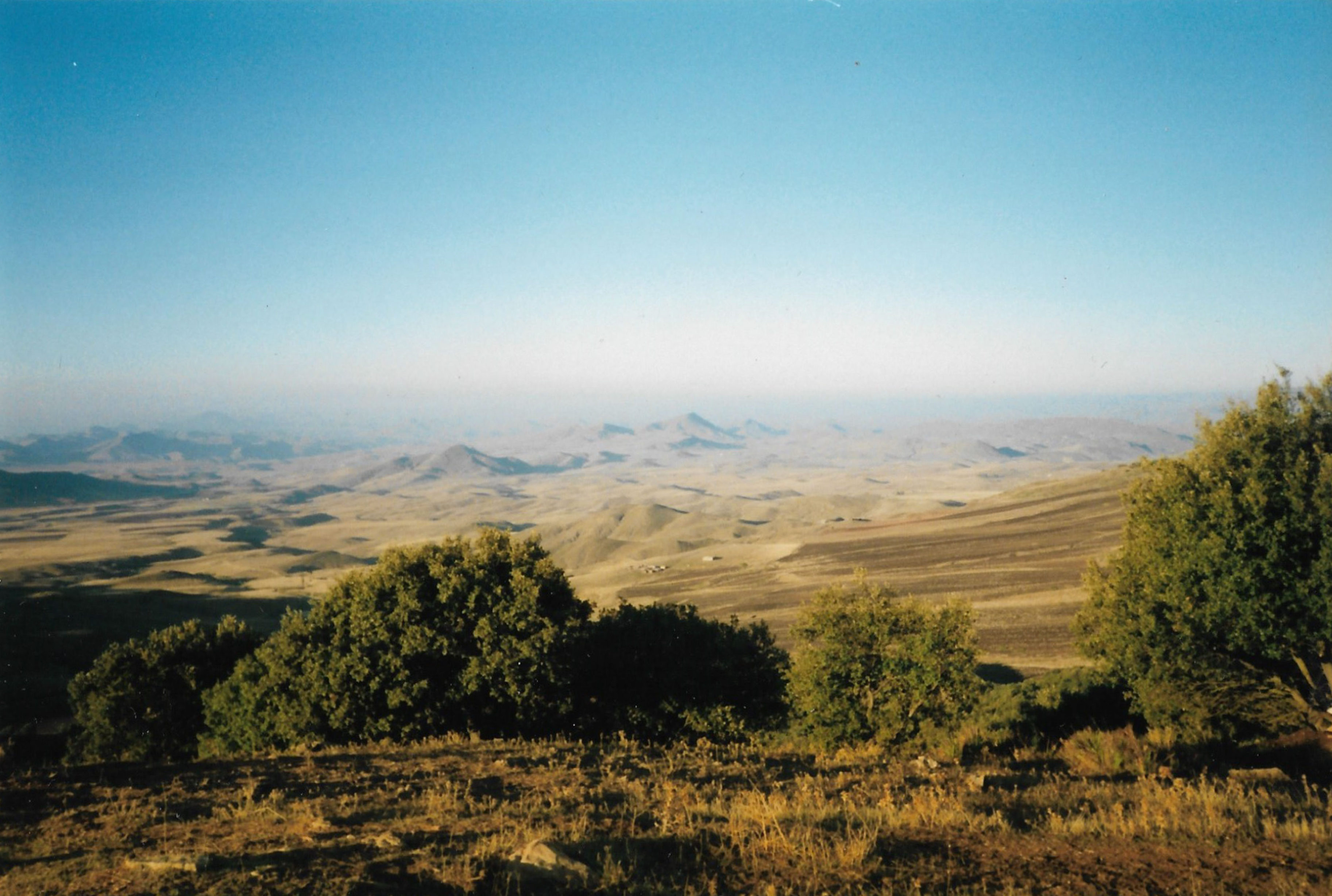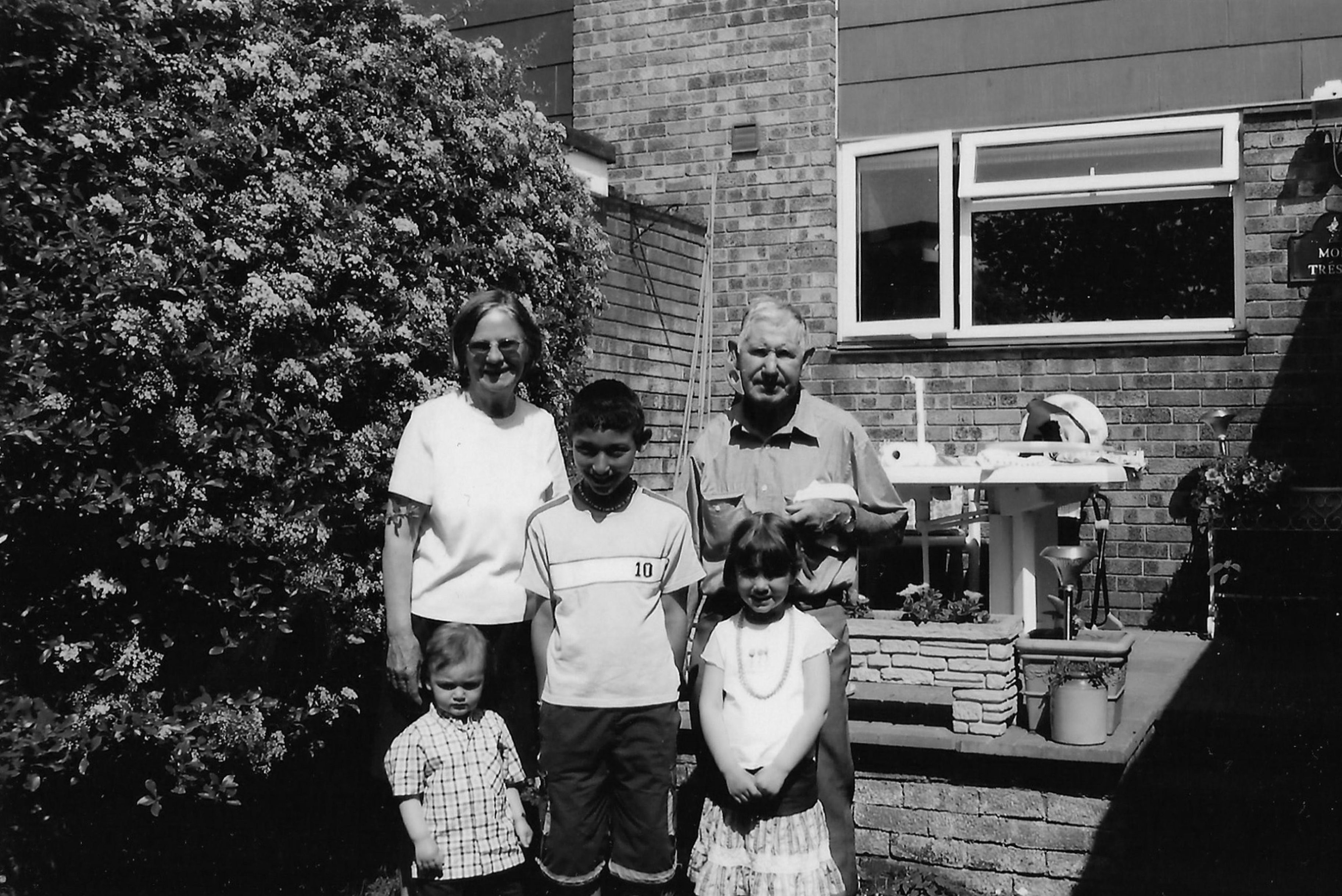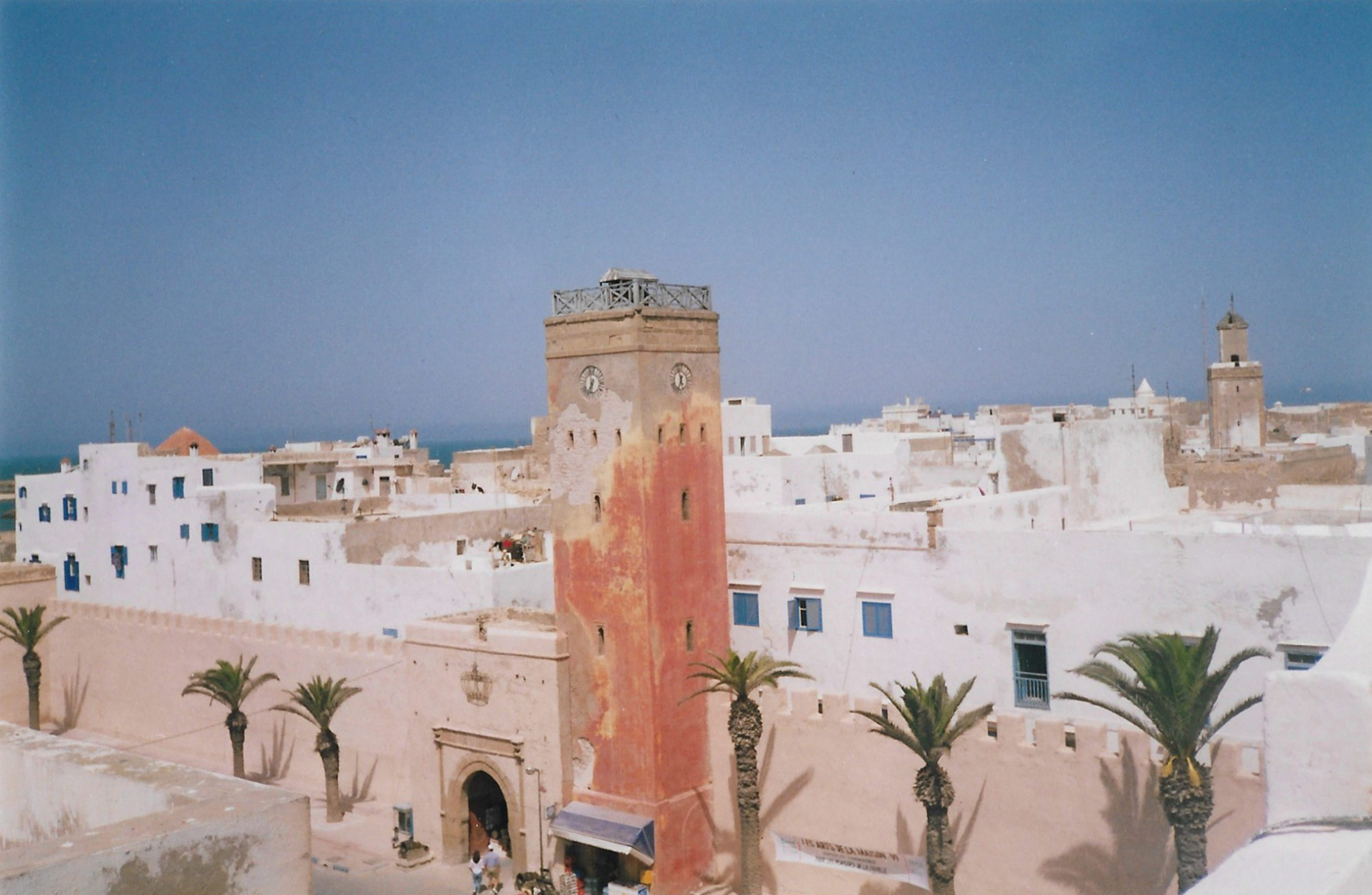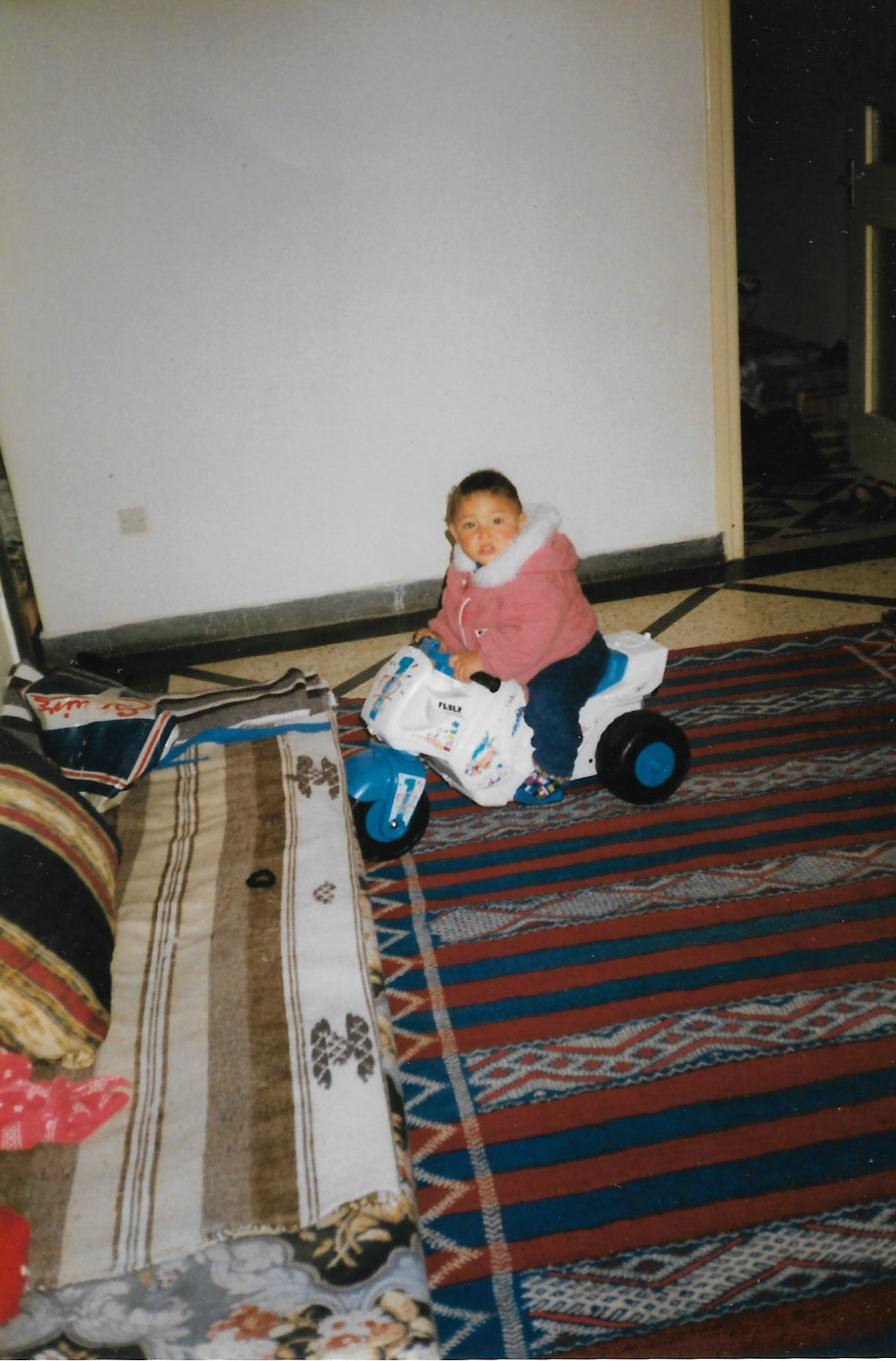I started thinking about ownership and the various paths I could follow for this mini project, I considered using internet sources and manipulating existing image like artists such as Hey Reilly who takes famous paintings, status and photographs and manipulates them. bellow we can see a few examples of their work, none of the images are original but the way they are cleverly collaged together in a relevant way creates a new piece of work. A lot of his work can be seen as a comment on modern politics, fashion and culture but is also very open to interpretation with a comedic angle.

Another idea I had was to use content from newspapers. I am interested in the ownership of the press and how newspapers are owned by big companies who ultimately have all the power to publish what they want. News stories are adapted and and publicised falsely to support the views of the paper and its readers. headlines and images a a big part of how news stories are interpreted because they are the fist and sometimes only thing we see. I looked into work which has already been done using newspapers and found a variety of work from collages to drawings.


I wanted to use and manipulate images and text from newspapers in my own work, I chose to use a Daily Mail because of how they are known for misleading headlines and images to draw the reader in. By using shocking and striking content the paper can make any story worth publishing. I cut out various parts of the paper that caught my attention and collages them in different ways to change their meaning.By re arranging the words and taking images out of context completely different sorties can be created, I find this concept very interesting when thinking about the modern world when relating it to problems with fakenews .


Daily Archives: October 23, 2018
Filters
Archive images
Response to Guillaume Bression and Carlos Ayesta
As explained in my previous post, this photo shoot is directed towards the remains of humanities destruction on the earth and reflecting on how it once was used. This photo shoot is based upon my thoughts about the earth and community as a whole, exploring and documenting the ruins that we have created.
Contact Sheet
Edited Images
Analysis
For my next photo shoot I intend to document a direct juxtaposition to this photo shoot by showing the specific interest in the relationship between man and unspoiled nature and the role it plays in defining our community. The main focus of the next shoot will revolve around the concept of the Sublime.
PAOLA PAREDES
PAOLA PAREDES MELANCHOLIA OF VIRGINS
This image is from Paola Paredes body of work ‘Melancholia of Virgins’, a selection of experimental pieces raising awareness of the humiliation of misdiagnosed women in Salpêtrière Hospital Paris for ‘Hysteria’ during the 19th century – a time when medicine subjected women to abhorrent treatment. The term ‘Hysteria’ is now recognized as a diagnosis stemming from pseudo-science, intrinsically linked to misogyny and man’s dominance. These ‘Hysteric’ women were put on display for audiences consisting of medical contemporaries, students and members of the public. One front-runner in Hysteria science was Jean-Martin Charcot he was charged with Hysteria treatment at the Salpêtrière Hospital in Paris, where he would use his camera as a tool for recording patient’s attack symptoms for later analysis. These pictures were then published and used as ‘evidence’. Paola Paredes then took these images and redeveloped them with the use of modern technology, stitching and handmade collages to produce animations and to magnify the humility and penalization that the institution forced on these women.
Conventionally speaking, the quality of the picture is poor due to the age of the photograph, with no depth in contrast, or wide spectrum of shades and

the noise that the camera has picked up in the darker tones of the image. However if you look at the image conceptually the poor quality of the image carries connotations of poor quality of life, respect and empathy for these women, which gives more depth to the context of the image. The rework of the image encourages viewers to to look at the image in a different way and interpret feelings and emotions throughout the whole of the frame, as the subjects face is completely covered making it impossible to read her emotions, so therefore applying an interpreted context to the image. The rework and manipulation of the image grasps the viewers attention on the feeling of being watched and recorded, being subjected to humiliation and being stripped of dignity.
This image is one of her still images which contrasts the effect of one of Paredes’ moving images where there is a sense of input of intensified emotion. However each of her still images convey the feeling of a forced or submissive silence. The use of the string covering the face and hiding the identity of this woman reinforces the idea of that these women were dehumanized, silenced and belittled. This simple technique unveils more about the context of this picture than if it was left untouched or the subject’s face was left on show. However, my interpretation of the reason why Paredes decided to cover her face is the possible referencing of the automatic invalidation of their opinions and dismissal of their freedom of choice and speech because of a ‘higher’ or ‘stronger’ force – in this pictures case the flash of the camera is the force acting against these imprisoned women, which could be interpreted as the misogynistic men that took advantage of them.
Photo Shoot – I want to experiment with Paola Paredes experimental approach to redevelop old images and give them new meanings and context to provide a thought provoking piece that encourages an audience to interpret an image with my political message. I want to take the idea from Paola Paredes of reworking, experimenting and manipulating existing images, carrying on the theme of my political landscape topic; the agriculture industry and its effect on climate change, being responisble for destruction of land and the mass usage of limited resources that don’t have enough value to raise concern like water and again, land.
Environmental Issues – Photoshoot Plan
Photoshoot Plan Inspired by Guillaume Bression and Carlos Ayesta
My first shoot is inspired by Guillaume Bression and Carlos Ayesta. Their photos stimulate thought at the consequences of human activity on the earth and this definitely interests me as it is interesting to see how rapidly the world is changing and to imagine how it will become in the future. There are many aspects to the world which are changing for the better however also many for the worse too. I think it would be interesting to explore both of these changing worlds, for the better and for the worse. For both of these approaches i will use a photo manipulation method to over exaggerate the changing world and the social/political issues in relation to the environment.

For this shoot I will follow the similar approach to my artist reference of Guillaume Bression and Carlos Ayesta by looking at the negative impacts on our earth due to human activity. This could be a variety of different issues such as air/noise/ light pollution, habitat loss and plastic in seas. I think it would be interesting to look at an abandoned/derelict area and incorporate a similar aspect to my artist such as wrapping up an object in cling film or perhaps have a person wrapped up escaping the harsh conditions. Also it would be engaging to have my model using the abandoned place as it would have been used when it was functional. This will give the image a clear juxtaposition and exaggerate the poor conditions in its current state.
I intend to show the viewer a glimpse of places long forgotten through the my images and allow them to serve as an eerie reminder that nothing lasts forever. I want to produce examples of humanity’s wastefulness and the impact society has on nature. By doing this i can engage with the audience and influence them to change the way in which they think about and treat the environment.
Clare Ray / Claude Cahun and Lewis Bush essay
In what way can the work of Lewis Bush and Clare Rae both be considered political?
Recently along with fellow photography students I visited Lewis Bush’s ‘Trading Zones’ exhibition and Clare Rae’s ‘Entre Nous’ exhibition in response to the late photographer Claude Cahun. Now the work that makes up both of these exhibitions is definitely something that can strongly be considered as political. How so is what takes some explaining.

Trading Zones Exhibition
Room 1
My initial thoughts and feelings on the work of these 3 photographers from the exhibitions that we visited was not that the work stood out as particularly political, instead I was just intrigued and taken by how visually interesting and conceptual the images being displayed were. It was immediately clear with the Entre Nous exhibition that both Clare Rae and Claude Cahun’s work had obvious visual links and similarities, a running theme somewhat; however after initially being exposed to Lewis Bush’s Trading Zones exhibition, his works didn’t all share a similar visual theme or aesthetic and instead they were more in sets or projects under one overhead theme of the finance industry. Despite this, after looking into all 3 of these photographers’ work in terms of the exhibitions in much more depth, it was very evident that each of their collated works had a strong political theme / issue running throughout.
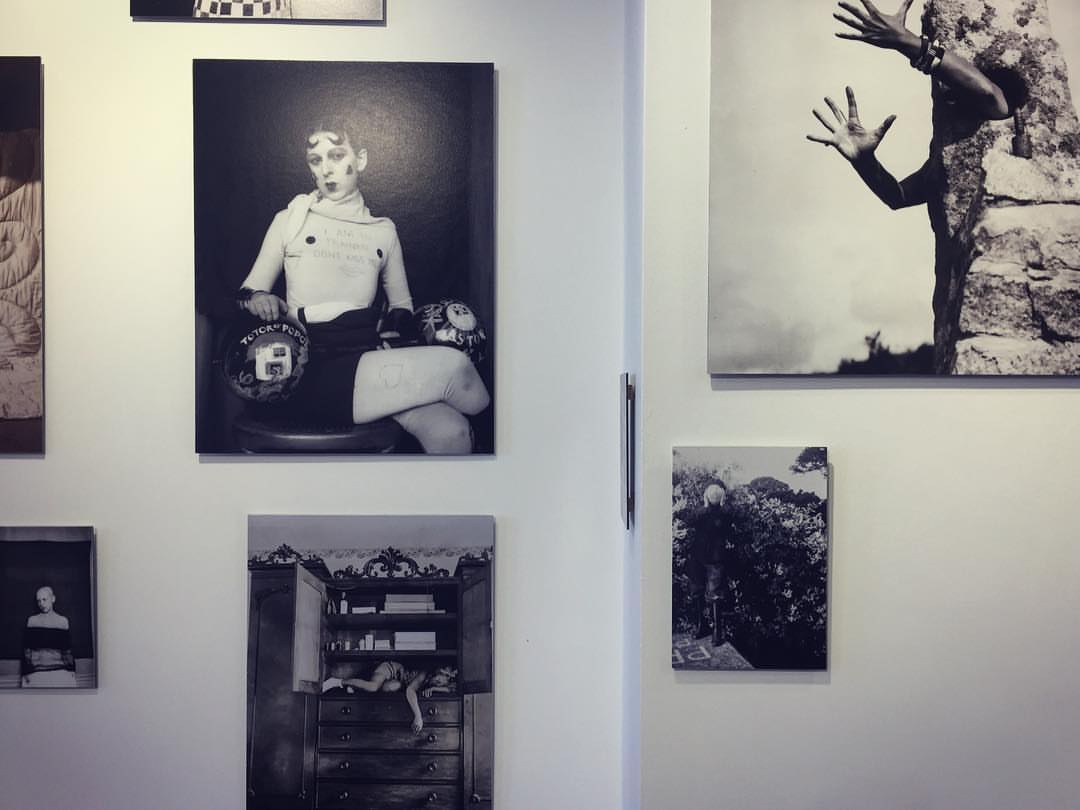
Entre Nous Exhibition
CCA Gallery
(Work of Claude Cahun)
In order to get a good enough understanding of where each of the photographers’ work is coming from it would only be right to take a brief look at the background of the three photographers…
Lewis Bush is a photographer, writer and educator, born in London in the year 1988. With a Master’s degree in documentary photography, he is a lecturer of photojournalism and documentary photography at London College of Communication (LCC.) His main beliefs and aims of his photography are “to draw attention to forms of invisible power that operate in the world” believing that “power is always problematic” because it is inherently “arbitrary and untransparent.” This says a lot about how Lewis Bush approaches photography in a documentary fashion, with a strong belief on the topic of power and how that is effective upon society and people individually. Specifically looking at his Trading Zones Exhibition which was located at the old police station in the royal square of St Helier, that took place in September. This was a body of work which was a result of Lewis Bush’s time as a photographer in residence at the Societe Jersaise in Jersey, exploring different aspects and topics surrounding the theme of finance.

Clare Rae is a photographer / artist who is based in Melbourne, Australia, who completed a Master of Arts by research in 2014 at Monash University, and received first class Honours in Fine Art in 2009 at RMIT University. Her approach to photography is very unorthodox as she experiments with performance and the use of her own body and figure as a subject of the images which she produces. ” Her work is informed by feminist theory, and presents an alternate and often awkward experience of subjectivity and the female body.” One of Rae’s main interests within her individual practice of performance photography is how ”the camera can act as a collaborator, rather than mute witness, to the performer.” As a self-proclaimed artist as well as being a photographer, this incorporation of performance within her photography is something which could be considered as a more artistic than photographic matter, in terms of lens based imagery. Specifically looking at Clare Rae’s work from the Entre Nous exhibition, this was a response to the work of Jersey based photographer Claude Cahun who explored similar themes and issues, predominantly that of feminism and gender stereotypes, within her work. Although the photographic practices or these two photographers are separated by 70 years they have a lot of similarities. Claude Cahun was an avant-garde artist and writer, who in the 1920s, was associated with a creative movement known as the Parisian surrealist movement. She was not a stereotypical citizen of Jersey, and probably still wouldn’t be classed as one to this day. She was a lesbian who was in a relationship with her half sister, she was also Jewish and she was activist who protested against the German occupation. To sum up the effects of her work ”Cahun’s subversive self-portrait photographs and texts have become highly influential for artists dealing with questions of gender identity and representation of the female body.”

In terms of how Lewis Bush and Clare Rae’s work is considered political, it is very evident after looking at their photographic intentions and ideas that they both cover very political matters within society. Although very different matters, they are certainly political, Bush’s being that of the finance industry which is very intertwining with politics, and Rae’s being that of feminism, equality and gender stereotypes which are also very politically discussed topics. These are political matters that all effect society somewhat in positive ways, and on the other hand sometimes not so much.
Bush covered various aspects of what finance actually is, specifically on the island of Jersey. These aspects showed different ways in which finance can be perceived, used and thought about by society. He approached the project in a very modern and experimental manner, with a range of subjects and topics linked to finance, whilst not going overboard with the experimentation, in order to not create too much abstraction. He used a wide range of archival imagery within the exhibition in his own way in order to help display his findings and interests that he found along the way of completing the project. One of the most interesting parts of the exhibition was the fact that he had made part of it interactive. Allowing visitors of the exhibition (members of the general public) to create there own response to the words ”Finance Is…” On cards that were attached to part of the exhibition. This allowed for people’s views and opinions on the topic of the exhibition to be expressed and viewed by others. Overall I believe that Bush’s exhibition was very successful at portraying the finance industry for what it is in a visual way.
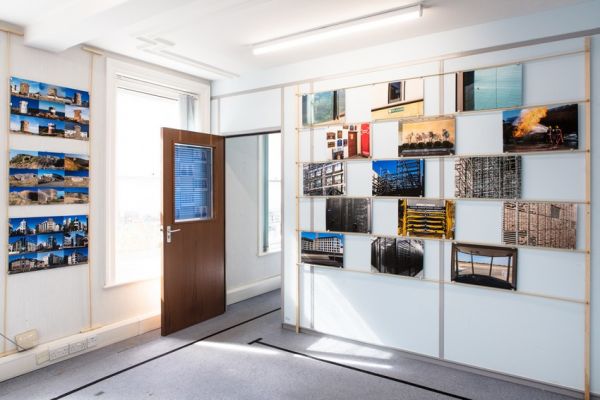
In contrast to Lewis Bush’s work Clare Rae’s approach to her work that made up the Entre Nous exhibition was more contemporary, and has more of a discreet and hidden meaning. Although we are aware that her work covered topics such as feminism and gender stereotypes, the imagery displayed in the exhibition is fairly open for interpretation as it is making the audience/viewer have to think about what each individual image is trying to portray. One of the main and most blatantly obvious visual differences between Bush and Rae’s work is that Rae’s photographs are monochrome, this may be in order to remove any distractions or false meanings that could be caused by the use of colour. Overall I believe that Clare Rae executed a very impressive exhibition which was a great response to the work of the surrealist photographer Claude Cahun and the topics surrounding her work.
Behind The Scenes Of Entre Nous Claude Cahun & Clare Rae
In conclusion it is very evident to me that both Lewis Bush and Clare Rae’s work can be considered as political, as they both cover extremely political matters specifically within the two projects of work which they have recently exhibited.
(The sources that I have used for information are linked throughout this post in blue.)
Essay 2: Public/ Private Archives
What Are Archives?
In the course of daily life, individuals and organizations create and keep information about their personal and business activities. Archivists identify and preserve these documents of lasting value.
These records — and the places they are kept — are called “archives.” Archival records take many forms, including correspondence, diaries, financial and legal documents, photographs, and moving image and sound recordings. All state governments as well as many local governments, schools, businesses, libraries, and historical societies, maintain archives.

Using the Photographic Archive as a Resource for Research and Ideas
For your Personal Investigation you have to engage with a notion of an archive. Archives can be a rich source for finding starting points on your creative journey. This will strengthen your research and lead towards discoveries about the past that will inform the way you interpret the present and anticipate the future.
Public archives in Jersey
Jersey Archives: Since 1993 Jersey Archive has collected over 300,000 archival records and it is the island’s national repository holding archival material from public institutions as well as private businesses and individuals. To visit click here
Jersey Archive can offer guidance, information and documents that relate to all aspects of the Island’s History. It also holds the collections of the Channel Islands Family History Society.
Societe Jersiaise: Photographic archive of 80,000 images dating from the mid-1840s to the present day. 35,000 historical images in the Photographic Archive are searchable online here.
Societe Jersiaise also have an extensive library with access to may publications and records relating to the island’s history, identity and geography. Click here

Archisle: The Jersey Contemporary Photography Programme, hosted by the Société Jersiaise aims to promote contemporary photography through an ongoing programme of exhibitions, education and commissions.
The Archisle project connects photographic archives, contemporary practice and experiences of island cultures and geographies through the development of a space for creative discourse between Jersey and international practitioners.
Link: http://www.archisle.org.je/
Private archives: Family photo-albums, objects, letters, birth-certificates, legal documents etc.
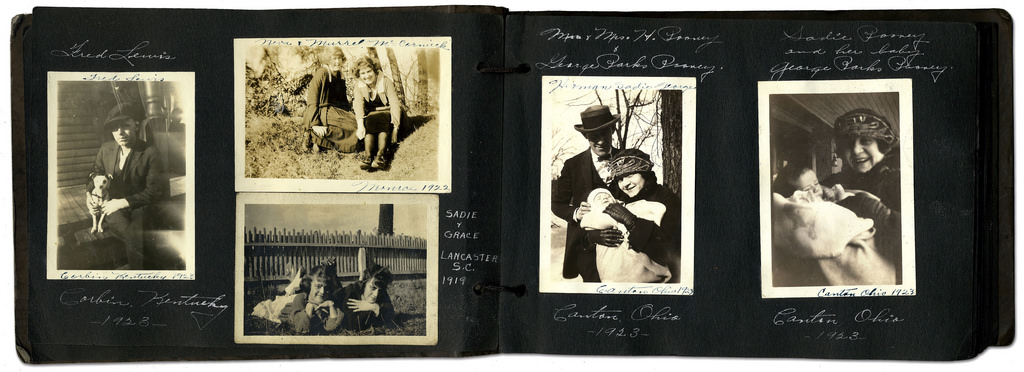
Digital images stored on mobile phones, uploaded on social media etc.

TASK
Write a 1000 word essay and answer this question: Whose Archive is it Anyway?
To answer this question you need to reflect on Photo-Archive’ talk by Gareth Syvret on Tue 12 June at the Société Jersiaise when we began the Future of St Helier project. Here is a link to Intro to the Photo Archive
Research at least two photographers from the list below in the photo-archive and choose one photograph from each that illustrates the themes of POLITICAL LANDSCAPES and include it in your essay
Read also the text by theorist David Bate: archives-networks-and-narratives_low-res, make notes and reference it by incorporating quotes into your essay to widen different perspectives. Comment on quotes used to construct an argument that either support or disapprove your own point of view.
Watch the Youtube clips below and consider the following sub-questions:
How do archives function?
What are their purpose?
How do archives act as repositories of cultural memories of the past?
In what way does photography perform a double role within archives?
Reference some of the artists and photographers mentioned in the David Bate’s text and use as examples.
Imagine how you will look in your archive of adulthood and what type/style of pictures you want them to be?
How will looking at archival material enrich your personal study?
In what way has looking at archives been a resourceful exercise?
What have you learned?
DEADLINE: Publish blog posts by Mon 5 NOV (Monday after H-TERM)
INDEPENDENT STUDY > HOMEWORK
Choose at least one option
Explore public archives and find links to your research and project based around Political Landscapes. Make a blog post
1. Explore your own family/ personal archives over and make a blog post with some of the material and describe how it will inform and develop your Personal Investigation. Ask parents, grand-parents and other family members to look through photo-albums, letters, boxes etc.
2. Plan at least one photo-shoot and make a set of images that respond to your research above and/ or Personal Investigation.
Extra research/ reading
Dr Gil Pasternak, Senior Research Fellow in the Photographic History Research Centre (De Montfort University, Leicester), will be part of a BBC documentary film exploring what family photographs say about Britain’s post-war social history.
Watch this Youtube clip where Dr Kelly Wilder, Director of Photographic History Research Centre, De Montfort University, Leicester delivers an academic paper, ‘The View from Everywhere: Objectivity and the Photographic Archive’ at a symposium on Photographic Archives at the Getty Centre in Los Angeles where she talks about the notion of objectivity when it comes to the use of photographic images. Here is a Review of symposium on Photo_Archives and Objectivity
Here is an essay example from previous A2 student, Rosanna Armstrong
Work by photographers in the collection at the Societe Jersiaise Photographic Archive. Use for further research
Badoux, Ernest
Dunham, Percy
Smith, Albert
Guiton, Emile F
Foot, Francis
William Collie
Laurens, Phillip Morel
Ouless, Clarence P
De Faye, Francis George
Dale, Edwin
Baudoux, Ernest
Martin Wyness
Charles Hugo
Claude Cahun
Martin Parr (Liberation)
Michelle Sank (Insula)
Yury Toroptsov (Fairyland)
Tom Pope ( I am not Tom Pope, You are all Tom Pope)
Jonny Briggs (Unpalatable Truths)
Tanja Deman (Sunken Garden)
Lewis Bush (Trading Zones)
Martin Toft (Atlantus, Masterplan, The Seaflower Venture)
Critical image analysis
Read through this Powerpoint how to analyse a photograph + photographic theory for more help and guidance. Or use Photo Literacy as a method of analysis: of TECHNICAL>VISUAL>CONTEXTUAL>CONCEPTUAL




